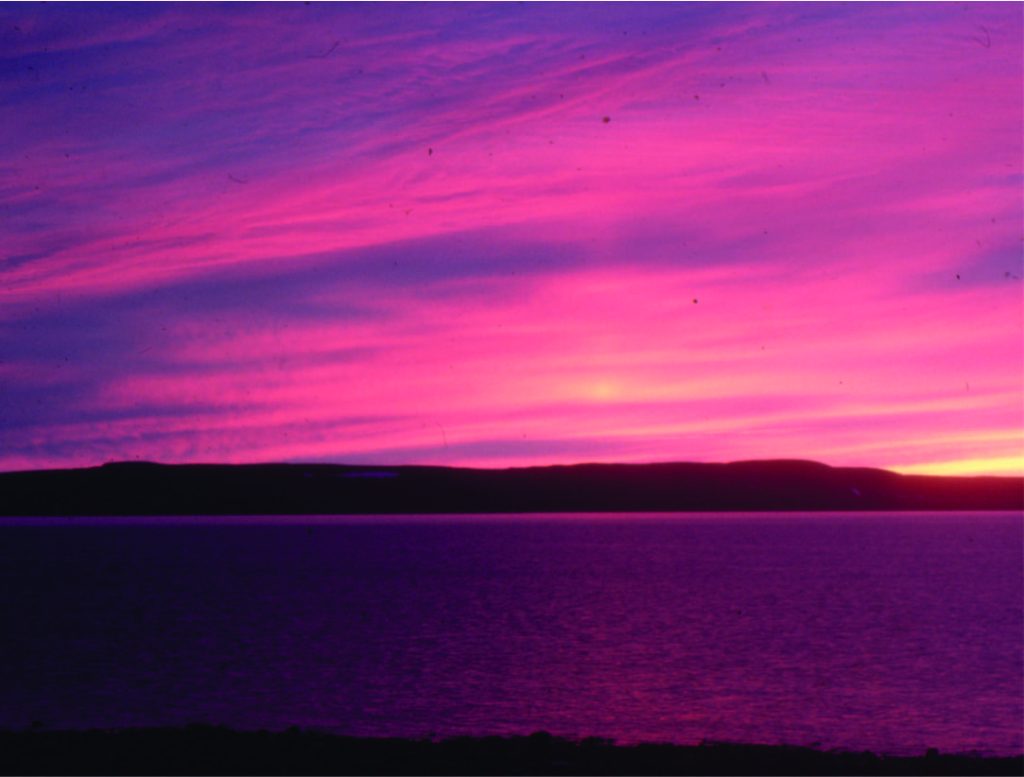Art can be thought of as (among other things) the construction of sensory (conscious and subconscious) images; images conveyed by the artist or construed by the audience. Science on the other hand is often thought of as the construction of hypotheses and theories, of grand ideas. In the vocabulary of science, words and phrases like logical analysis and objectivity are deemed central to the whole process of doing science and frequently are used to set it apart from other human endeavors, like art, at least in the minds of those who like such distinctions. But images are also central to science. We create them whenever we talk of evolutionary lineages, of Schrodinger’s Cat, double helixes, nano-particles and atomic tunnels. In my own discipline, whenever I think of James Hutton’s (1785) discovery of deep time (geological), I don’t think of him engrossed in syllogisms, but in some intriguing mix of reason and creative wondering at the world he observed. The syllogisms probably came later. There is creative thinking in science; it is the same creativity that emboldens the painter and poet to explore the internal and external universe they see. Creativity is not just a useful add-on to the progression of science, its so-called method; it is a vital part of discovery and invention. Without it science would be little more than a collection of data. These ideas are not new; many scientists have espoused them. But they are worth reiterating. Continue reading
Tag Archives: Ancient atmosphere
Ancient earth. 3 The air we breath; how our atmosphere evolved

The really ancient earth: How our atmosphere evolved
Take a deep breath. Savour it. One of the few absolutes of our physical world (that we probably haven’t looked after as well as we might have). This post continues the theme “The Really Ancient Earth” by looking at what we know about the origin of our atmosphere; some of the evidence and some of the hypotheses. What was it like on day 1 (about 4600 million years ago) and how did it evolved into our breath-taking world today? Continue reading
Ancient earth. 1 A time-line for the first 4 billion years
A time-line for the first 4 billion years of Earth history
The Cambrian, that relatively brief period in geological history (40 odd million years) was witness to one of the most amazing series of biological events in the entire history of the Earth; the rapid, almost explosive appearance of marine critters with preservable shells and skeletons – a real first. Trilobites are probably the best known fossils from that period, but there are also some pretty weird and wonderful looking soft-bodied creatures (one famous fossil locality is the Burgess Shale near the town of Field, British Columbia). Most animal life today can track its origin to those early life forms. These events began about 540 million years ago (how easy these numbers roll off the tongue, or pen). But we also know that our Earth is pretty close to 4600 million years old (4.6 billion – How old is Earth); in other words there is almost 4 billion years, a humongous period of time in which, seemingly, not much happened. 4000 million years worth of boredom! This period is know as the “Pre” Cambrian, or Precambrian. Most Precambrian events did take place pretty slowly, but these events also determined the kind of world we now live in: the air we breath, the oceans and rivers, the biosphere and indeed life itself, all originated and evolved over this, the deepest of geological time. Continue reading

